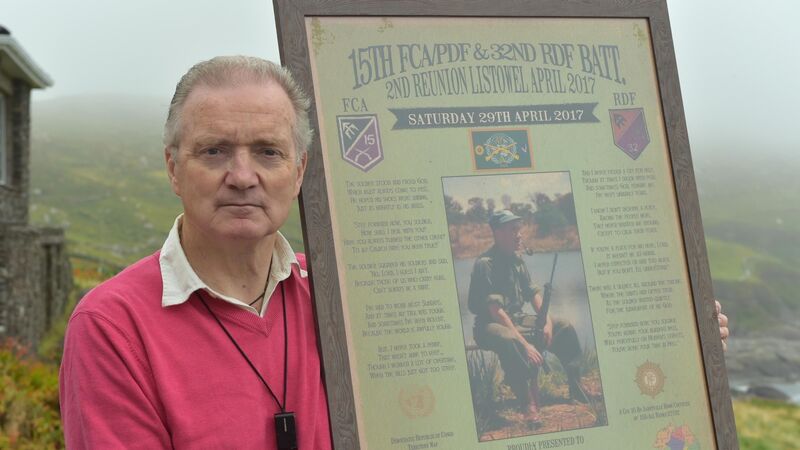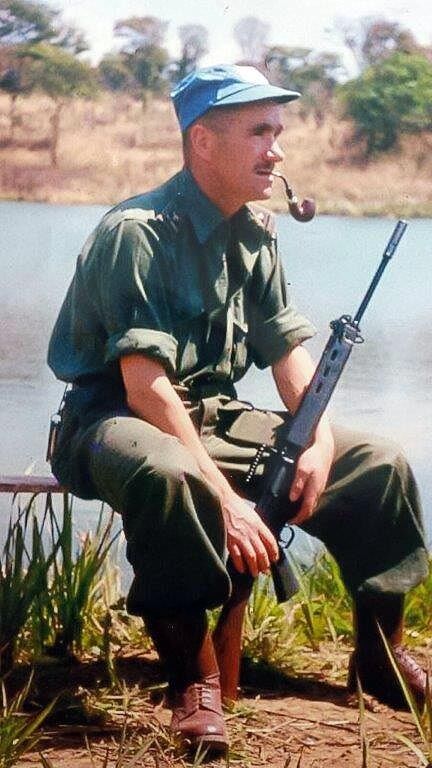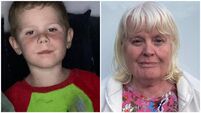Jadotville commander’s son to speak at event commemorating street that housed 13 veterans

Leo Quinlan, son of Cmdt Pat Quinlan, who led the Siege of Jadotville in The Congo, holds a photo of his father. Picture: Don MacMonagle
A community is to unveil a monument next month in remembrance of 13 soldiers who fought heroically in the Battle of Jadotville in The Congo and who all lived in the same street.
The soldiers lived in Assumption Road, Athlone, and the man invited to give the oration at the ceremony is the son of the officer who led their defence against a vastly overwhelming force and whose tactics have become textbook reading ever since for militaries around the world, including the prestigious US Military Academy at West Point.
Leo Quinlan, son of the late Commandant Pat Quinlan, remembers as a boy cycling to the soldiers’ homes with messages from them to their families.
He also brought them tape recordings made while they were serving with the United Nations in the war-torn African country, some of which were made while they were imprisoned for a short space of time after being captured.
The 13 were part of a group of around 150 Irish troops sent to protect the town of Jadotville as the UN feared widespread bloodshed when part of The Congo, known as Katanga, declared independence.

Moíse Tshome, the Katangese president wanted to get his hands on more of the vast profits which were made from cobalt mining in his region. It produced about 60% of the world’s cobalt, which was used as a principal source of uranium used for the USA's nuclear arsenal.
Having Irish troops in the way was not what Tshome or the mining companies wanted and on September 13, 1961, Katangese forces — backed up by mercenaries from Belgium, France and Rhodesia (now Zimbabwe) — attacked them while they were attending mass in Jadotville.
Under the command of Quinlan, the small Irish contingent held out gallantly against an Katangese force of 5,000 until they ran out of ammunition and food and were forced to capitulate. Amazingly few of Quinlan’s men were wounded and none killed. The opposition, however, suffered huge casualties.
“I remember taking messages to the families who lived on the road. They all lived in council houses there. I put some of the tapes they sent, which were usually 40 seconds long for each man, onto a CD and have given them to the men's children and grandchildren,” said Leo, who himself once served as a commandant in the Irish Army.
“All the [13] men, sergeants, corporals and privates, are deceased, but two of their widows are still alive and it’s hoped they will attend the ceremony,” he said.
The locals are to unveil a memorial to the men at a little park at one end of the street on September 2, which coincides with the 72nd anniversary of the opening of the houses.










